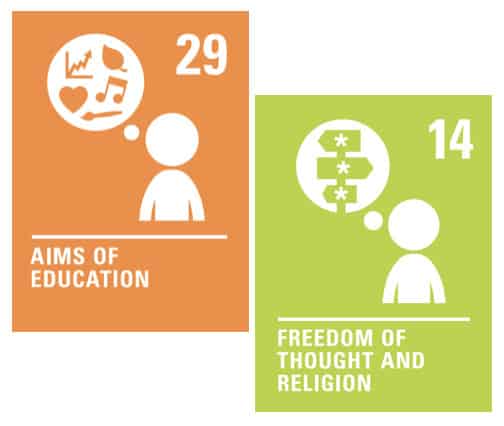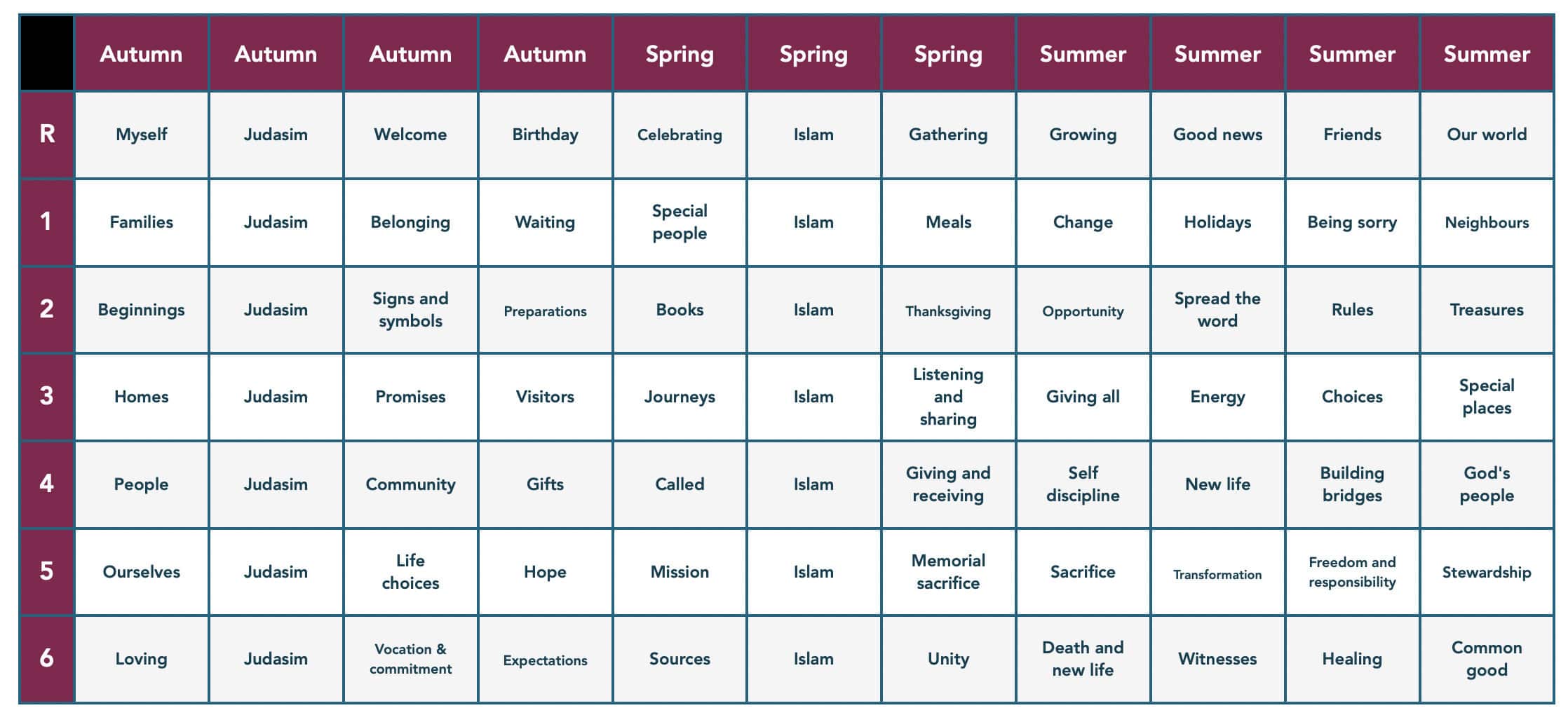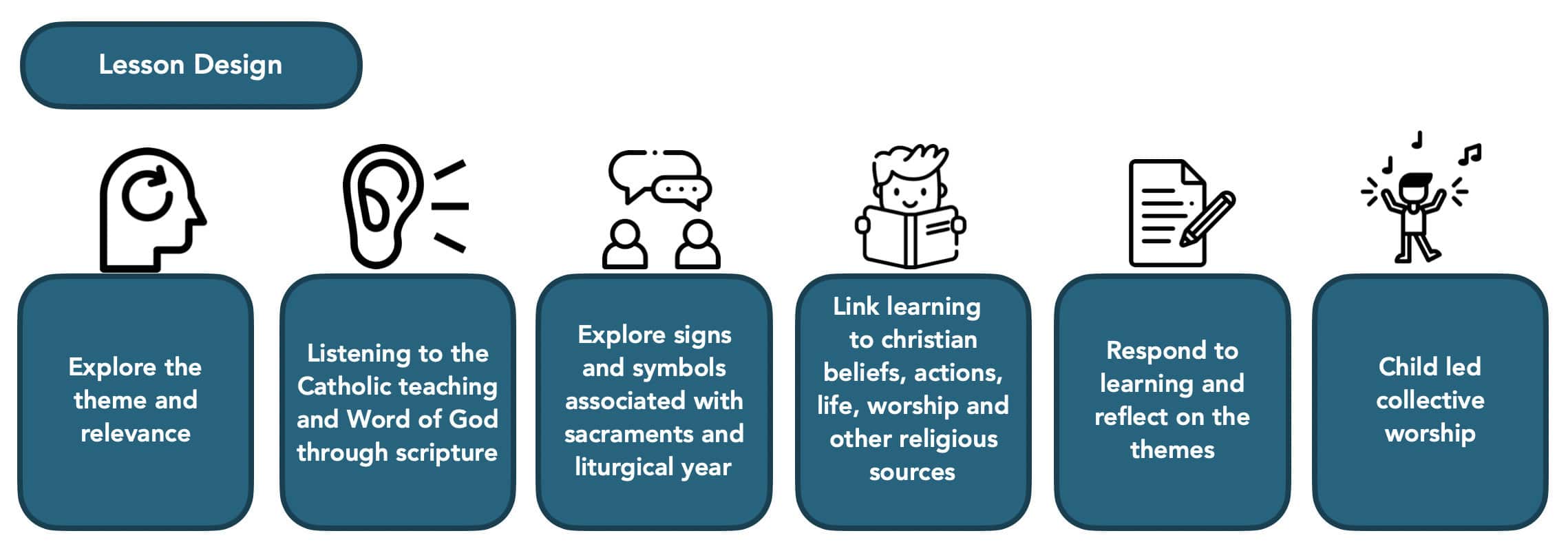
Intent: What do we want for all our pupils?
We want our pupils to explore the Catholic faith and teachings. In line with Gospel Values, pupils will make good

moral and ethical choices based on the teaching from scripture and understand how these teachings link to religious worship, catholic life and understand how this has an impact on christian beliefs and actions. We want pupils to understand the importance of the liturgical year and the seven sacraments. This will enable them to discern their vocation to be active citizens in service to the world.
Our children will:

Implementation: How we sequence & teach our RE curriculum
Religious education is not simply one subject but many making the foundation of the entire educational process. Beliefs and values studied inspire and draw together every aspect of the Catholic life of the school. The high-quality curriculum taught in RE derives from guidance from the Hexham and Newcastle Dioceses and the Come and See programme. Each year group from EYFS to Y6 follow the teaching sequence from Come and See which falls in line with liturgical year and throughout their time at primary school will cover all seven sacraments. We have good links to our parish community reach out regularly to support the children’s experience of sacraments and religious teachings. The RE curriculum closely links to ongoing collective worship in school as well as their ongoing contributions to catholic life mission.

All pupils in our school, irrespective or ability, faith and background will have appropriate access to the religious education programme. A variety of teaching and learning strategies will be used from across the curriculum, adapted appropriately to the needs and learning styles of pupils to allow them to access the full curriculum. The Come and See programme used for the teaching of religious education addresses four main areas of study which is outlined in the curriculum directory provided by Hexham and Newcastle Dioceses. These are: Revelation, Church, Celebration and life in Christ. Two other faiths – Judaism and Islam – are taught from EYFS to Y6. 10% of our curriculum time is allocated to the teaching of RE. The sequence of topics in RE follow the Come and See programme with the exception of Year 4 who move topics to coincide with their sacramental preparation. Time is given to children in lesson to reflect on themes and learning. Each topic contains an explore unit which introduces the theme, a reveal units which explores the Word of God, key questioning and Christian teachings and a respond unit which allows for reflection of themes and teaching covered. The respond unit also allows children to plan a collective worship based on the Word of God covered and the key themes.

Impact: How do we assess our RE curriculum?
Ongoing formative assessment is used in RE against the age-related standard in religious education taken from the document agreed at the Bishops’ conference. Children are expected to be meeting age-related expectations by the end of their key phase which mean end of EYFS, end of year 2, end of year 4 and end of year 6. Trackers are updated termly with the children’s progress and allows opportunity to see where gaps in knowledge and skills lie and where additional support to meet standards need to be implemented.
Ongoing assessment is tracked by using assessment descriptors in pupils’ books where standard met are identified. Pupils self-assess their own knowledge, understanding and confidence on the same document. Each year group tracks a child who is on track to meet age related expectations at the end of the key phase using post-it notes. Blue represents knowledge and understanding, orange is for analysis and evaluation and green is for engagement and response. There are regular moderation opportunities within the Hexham and Newcastle Diocese and within the Bishop Chadwick Education Trust to ensure standards are being met.
Re coordinator monitors the teaching and evidence of RE through the Bishop Chadwick CET 5 strand approach which focuses on: teaching and learning in lessons, books, planning, pupil voice and data annually and each term using the 4-strand approach which consists of all except the observation of teaching and learning.
 St. Cuthbert's Primary School Seaham
St. Cuthbert's Primary School Seaham
